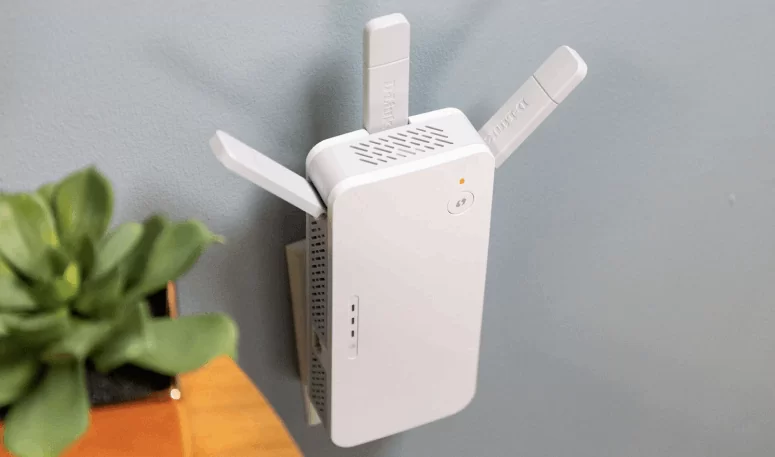Having a strong and reliable Wi-Fi connection isn’t just a luxury lifestyle but rather a necessity. With the rise of remote work, online learning, and smart devices, the demand for reliable and strong internet connectivity extends beyond the confines of our indoor spaces.
If you have a backyard, garden, or pool area, it is good to enjoy your Wi-Fi outside for streaming music, working on a laptop, or even hosting outdoor movie nights.
However, extending your Wi-Fi coverage outside your home can be a challenge due to distance, walls, and environmental interference. But in this article, I will disclose how to extend your Wi-Fi connection Outdoors.
Here’s how you can extend your Wi-Fi connection outside.
1. Evaluate Your Current Wi-Fi Coverage
Before extending your Wi-Fi outdoors, it’s important to first assess your current Wi-Fi coverage inside your home. This will help you understand where the weak spots are and how far your signal extends outside.
Use a Wi-Fi analyzer app on your phone to check signal strength at various locations around your home and yard. Wi-Fi strength is typically measured in decibel milliwatts (dBm), with signals closer to -30 dBm being very strong, while anything below -70 dBm is considered weak.
Walk around your outdoor spaces and note where the signal starts to drop off. This assessment will give you a good idea of the areas that need better coverage and guide your approach to extending Wi-Fi outdoors.
2. Position Your Router Optimally
One of the simplest ways to improve outdoor Wi-Fi coverage is by optimizing the placement of your Wi-Fi router. Many people hide their routers in cabinets or place them far from exterior walls, which can weaken the signal in outdoor areas. Ideally, your router should be centrally located in your home, away from walls, metal objects, and appliances that can block or interfere with the signal.
For outdoor coverage, consider placing your router near a window or an exterior wall that faces your outdoor space. The fewer obstacles between your router and the outdoors, the stronger the signal will be.
3. Upgrade Your Router
If your router is outdated, it might not be capable of providing strong or wide-ranging coverage. Modern routers with advanced technologies such as Wi-Fi 6 or mesh capabilities offer better performance and a broader range. Upgrading to a new router can significantly improve your Wi-Fi signal’s ability to penetrate walls and cover outdoor areas.
Dual-band or tri-band routers can also be beneficial, as they allow devices to connect to different frequency bands, reducing congestion and improving overall speed and range.
4. Use Wi-Fi Extenders or Repeaters
Wi-Fi extenders or repeaters are a popular solution for extending your Wi-Fi signal outdoors. These devices are placed between your router and the outdoor area where you need better coverage. They work by receiving the existing Wi-Fi signal from your router, amplifying it, and rebroadcasting it to extend the range.
When using an extender for outdoor Wi-Fi, place it near a window or exterior wall that’s close to the outdoor area where you require a stronger signal. This ensures it can pick up a strong signal from the router while effectively boosting the signal to your outdoor space. Wi-Fi extenders are relatively easy to install, and they’re an affordable solution for improving outdoor connectivity.
5. Set Up a Mesh Wi-Fi System
Mesh Wi-Fi systems are designed to provide comprehensive coverage throughout your home and outdoor areas by using multiple access points (also called nodes) to create a unified network. These systems are an excellent option for large homes or properties with outdoor spaces that require reliable Wi-Fi coverage.
Mesh nodes communicate with each other to provide consistent coverage, ensuring that your devices seamlessly connect to the strongest node without any interruptions. For outdoor Wi-Fi, you can place a mesh node near your yard, patio, or outdoor living area. Some mesh Wi-Fi systems even offer weatherproof outdoor nodes specifically designed for outdoor use.
6. Install an Outdoor Wi-Fi Access Point
If you need a more robust solution, consider installing an outdoor Wi-Fi access point. Unlike extenders or mesh systems, outdoor access points are specifically designed to provide Wi-Fi coverage in outdoor environments. They’re weatherproof and built to withstand outdoor conditions such as rain, heat, and cold.
Outdoor access points are typically mounted on walls or poles, and they broadcast a powerful Wi-Fi signal to a wide area. This option is ideal for larger outdoor spaces, such as gardens, patios, and backyards. Some access points can provide coverage over hundreds of feet, making them suitable for larger properties or homes with expansive outdoor areas.
7. Consider Powerline Adapters with Wi-Fi Capability
Powerline adapters can also be a viable option for extending Wi-Fi outdoors. These devices use your home’s electrical wiring to transmit data, essentially turning your electrical outlets into network connection points. Powerline adapters come in pairs: one is connected to your router, and the other can be plugged into an outlet near your outdoor space. Some powerline adapters even have built-in Wi-Fi extenders, allowing you to create a Wi-Fi hotspot near the outdoor outlet.
This option works best if you have electrical outlets near your outdoor space and offers a simple way to extend Wi-Fi without running long cables.
8. Optimize Network Settings for Outdoor Use
Beyond hardware solutions, you can also optimize your network settings to improve outdoor performance. Start by checking your router’s firmware to ensure it’s up-to-date, as manufacturers often release updates to improve performance and security.
Additionally, you can adjust the wireless channel your router uses. If you’re experiencing interference from neighboring Wi-Fi networks, switching to a less crowded channel can help reduce interference and improve signal strength. Most routers allow you to manually select a channel in the settings menu.
9. Run Ethernet Cables for a Direct Connection
For the most reliable and high-speed outdoor internet connection, running an Ethernet cable from your router to an outdoor Wi-Fi access point or outdoor area is a solid option. This method ensures that you won’t experience any signal degradation or interference.
Ethernet cables are capable of delivering faster speeds and can maintain a stable connection over longer distances than wireless signals.
While running an Ethernet cable may require some effort, such as drilling through walls or setting up conduits, it provides the most dependable solution for outdoor Wi-Fi.










